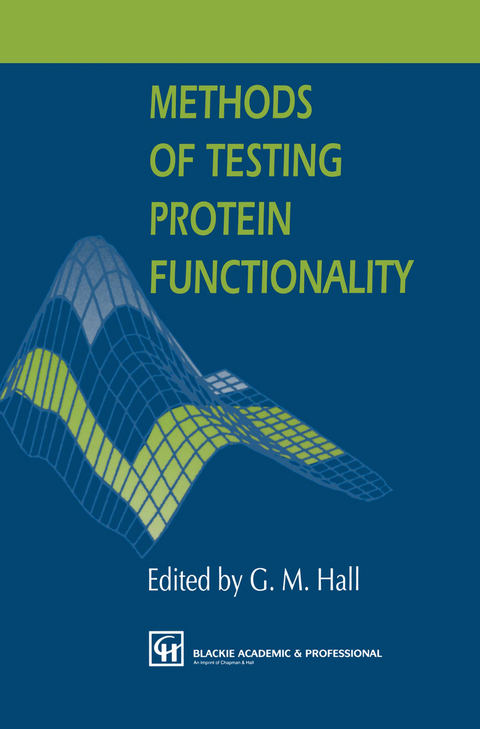
Methods of Testing Protein Functionality
Springer-Verlag New York Inc.
978-1-4612-8517-5 (ISBN)
Protein functionality is big business in the food industry, both academic and commercial. This reflects the fascination of protein chemistry and the commercial value of proteins in giving texture and substance to foods. My first encounter with the subject came about through an interest in assessing the extent of thermal damage in spray-dried proteins. A change in functional properties seemed a useful guide to the thermal damage. I found the literature replete with methods (and theory) and so did what everybody else seemed to do - I devised my own methods which were slight variations on the general theme. However, being an analyst at heart I thought there must be a systematic approach to the various tests available. This book is an attempt to assess the practice of protein functionality testing, keeping theory to a minimum, followed by a suggested 'standard' method or protocol to follow. Each chapter is devoted to a single functional property and the reader will see that attempts to 'standardise' them have had varied success, perhaps reflecting the complexity of the mechanisms at work. As mentioned above theory has been kept to a minimum but hopefully it supports the practical methodology described. I hope that the book stimulates debate on the subject; it is certainly not the last word! G. H. Contributors Dr G. E. Arteaga Centro de Investigacion en Alimentation y Desarrollo, Hermosillo, Sonora AP 1735, Mexico Dr. S.
1 Basic concepts.- 1.1 Introduction.- 1.2 Sources of functional proteins.- 1.3 Factors affecting protein functional properties.- 1.4 Conclusions.- References.- 2 Solubility.- 2.1 Introduction.- 2.2 Review of methods for measuring solubility.- 2.3 Protocols for methods.- Acknowledgement.- References.- 3 Viscosity.- 3.1 Introduction.- 3.2 What is viscosity?.- 3.3 Viscometers for measuring shear viscosity.- 3.4 Protocols for measuring viscosity.- 3.5 Summary.- References.- List of manufacturers.- 4 Gelation.- 4.1 Introduction.- 4.2 Scientific basis of protein gelation.- 4.3 Methods of testing gel properties of proteins.- 4.4 Protocol for testing the gelling ability of proteins.- Acknowledgement.- References.- 5 Foam formation and stability.- 5.1 Scientific background.- 5.2 Review.- 5.3 Protocols.- References.- 6 Emulsions.- 6.1 Introduction.- 6.2 Emulsion definition.- 6.3 Forces involved with emulsions.- 6.4 Emulsion stability.- 6.5 Stabilizers and emulsifiers.- 6.6 Forming emulsions.- 6.7 Methods of measuring emulsification properties.- 6.8 Other useful parameters when assessing emulsion properties.- 6.9 Conclusions.- References.- 7 Determining water and fat holding.- 7.1 Introduction.- 7.2 Scientific basis.- 7.3 Waterholding.- 7.4 Fat holding.- 7.5 Development of a test protocol.- 7.6 Conclusions.- References.- 8 Measurement of surface hydrophobicity.- 8.1 Introduction.- 8.2 Measurement of surface hydrophobicity.- 8.3 Experimental protocols.- References.
| Zusatzinfo | XII, 266 p. |
|---|---|
| Verlagsort | New York, NY |
| Sprache | englisch |
| Maße | 155 x 235 mm |
| Themenwelt | Technik ► Lebensmitteltechnologie |
| ISBN-10 | 1-4612-8517-8 / 1461285178 |
| ISBN-13 | 978-1-4612-8517-5 / 9781461285175 |
| Zustand | Neuware |
| Haben Sie eine Frage zum Produkt? |
aus dem Bereich


